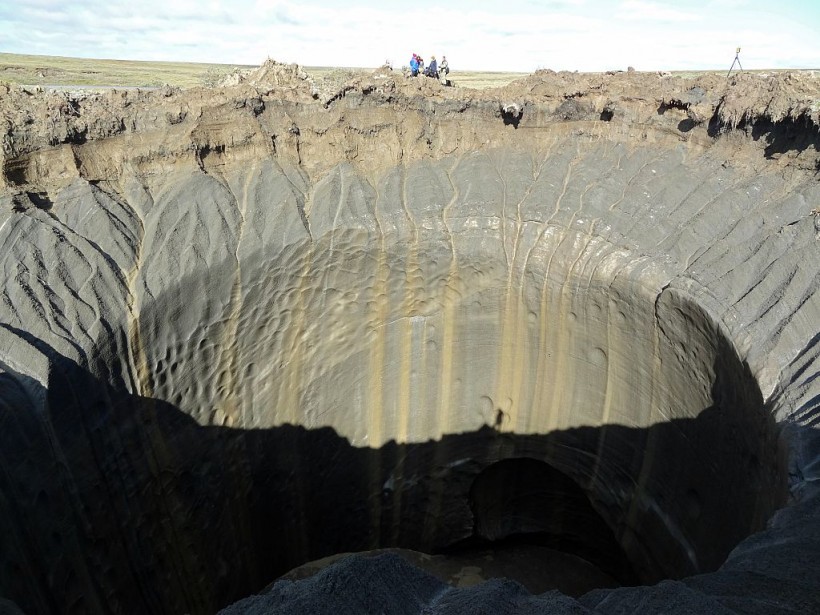Scientists are pushing for a novel explanation to shed light on the bizarre giant exploding craters that seem to randomly appear over Siberian permafrost.
Giant Exploding Craters
These craters were first spotted in 2012. They were observed to pop up in Siberian permafrost, leaving scientists puzzled.
The bizarre craters could be substantial, reaching up to 65 feet in width and over 160 feet in depth. They can also blast debris chunks at a distance of hundreds of feet. There are even reports that suggest that a blast can be heard up to 60 miles away.
Scientists are now proposing that hot natural gas from reserves below the surface could be the reason behind their bursts. These findings could shed light on why the odd craters only surface in specific regions in Siberia.
ALSO READ: Earth's Oldest Impact Craters Are Vanishing; What Happened to These Circular Depressions?
Natural Gas
According to Helge Hellevang, the study's lead author and an environmental geosciences professor from the University of Oslo, the great underground natural gas reserves of the area make them known. Hellevang adds that when atmospheric warming or climate change weakens the permafrost's other parts, these outbursts may result.
A lot of organic material gets trapped in permafrost. With temperature rises, this permafrost thaws, enabling the decomposition of mulch. Such a process results in the release of methane.
Hence, scientists naturally argued that the methane that seeps could be the explanation behind the craters. Such a process does not seem bizarre, as it is also believed to lead to thermokarsts, which are lakes that appear in regions where permafrost melts. This bubbles with methane and can even be lit on fire.
However, this does not shed light on why the odd bursting craters appear so localized. At present, only eight craters have been identified. All of them have been observed in a very specific region: Northern Russia's Western Siberia Yamal and Gydan peninsulas.
In contrast, exploding lakes can be seen in various areas where permafrost is present, such as Canada.
The team of Hellevang suggests that another mechanism could be at work. They argue that hot natural gas could be building up beneath the frozen soil layer and warming the permafrost from underneath. These hot plumes of gas could aid in the thawing of the permafrost, making it weaker and more likely to collapse.
Hellenvang explains that the explosion can only take place if the permafrost is weak and thin enough to break.
Temperatures that rise melt the permafrost's upper layer simultaneously. This leads to the ideal conditions for gas to be suddenly released. This may trigger an explosion or a gas-caused mechanical collapse. The team suggests that this is what creates the crater.
The scientists' model shows that more craters of similar nature could have been created. However, they may have disappeared as water and soil close by may have filled the gap.
Their hypothesis has been published in a preprint server. It is very to undergo peer review.
According to Earth scientists Lauren Schurmeier from the University of Hawai'i, further evidence will be necessary to show that the gas reserves are accumulating beneath the permafrost.
Nevertheless, if the hypothesis is proven to be true, it could mean trouble for current climate models. It may imply that the craters serve as massive chimneys where dangerous methane could be suddenly freed into the atmosphere, as noted by Thomas Birchall from the University Centre in Svalbard.
However, Hellevang was quite cautious about this. If the phenomenon only persists in a specific area, it could mean that its effects are small when it comes to a global scale. Hellenvang explains that what is necessary is to understand the quantity of methane that is leaked from such systems and to compare it with the methane present in the permafrost.
RELATED ARTICLE: Scientists Uncover the Mystery Behind the Massive Craters in Siberia
Check out more news and information on Environment & Climate in Science Times.















